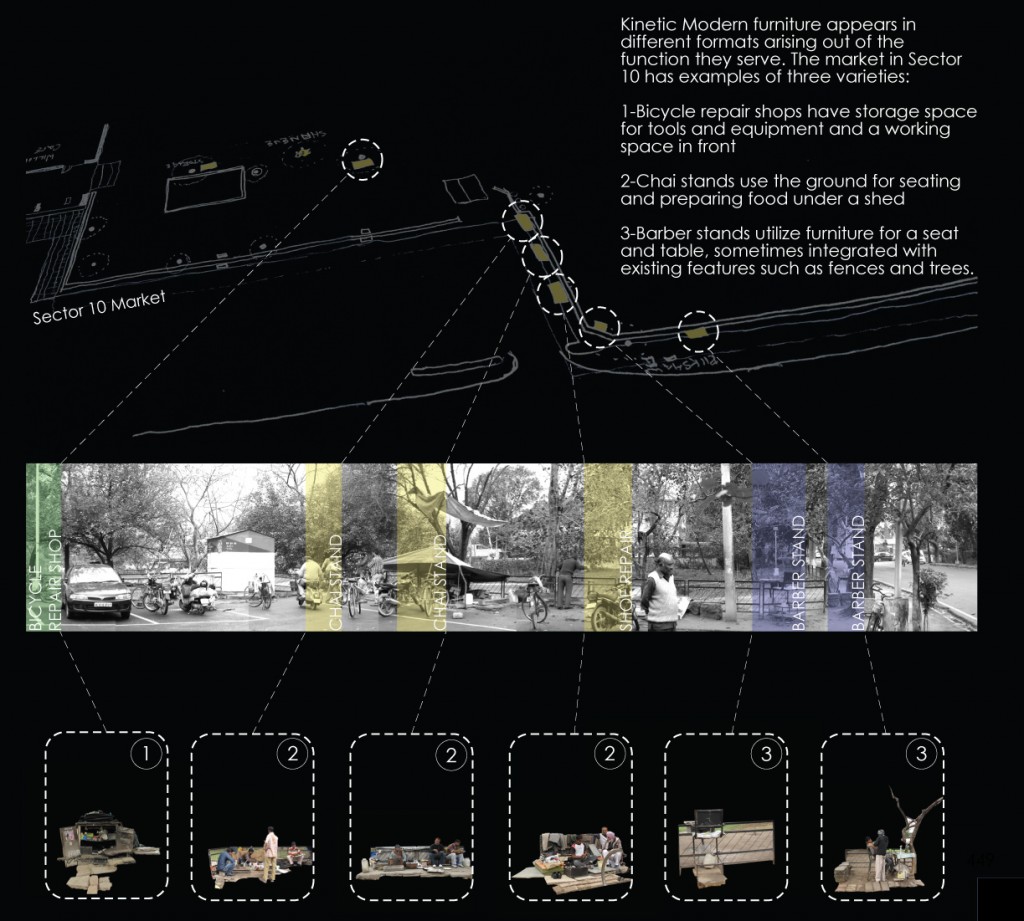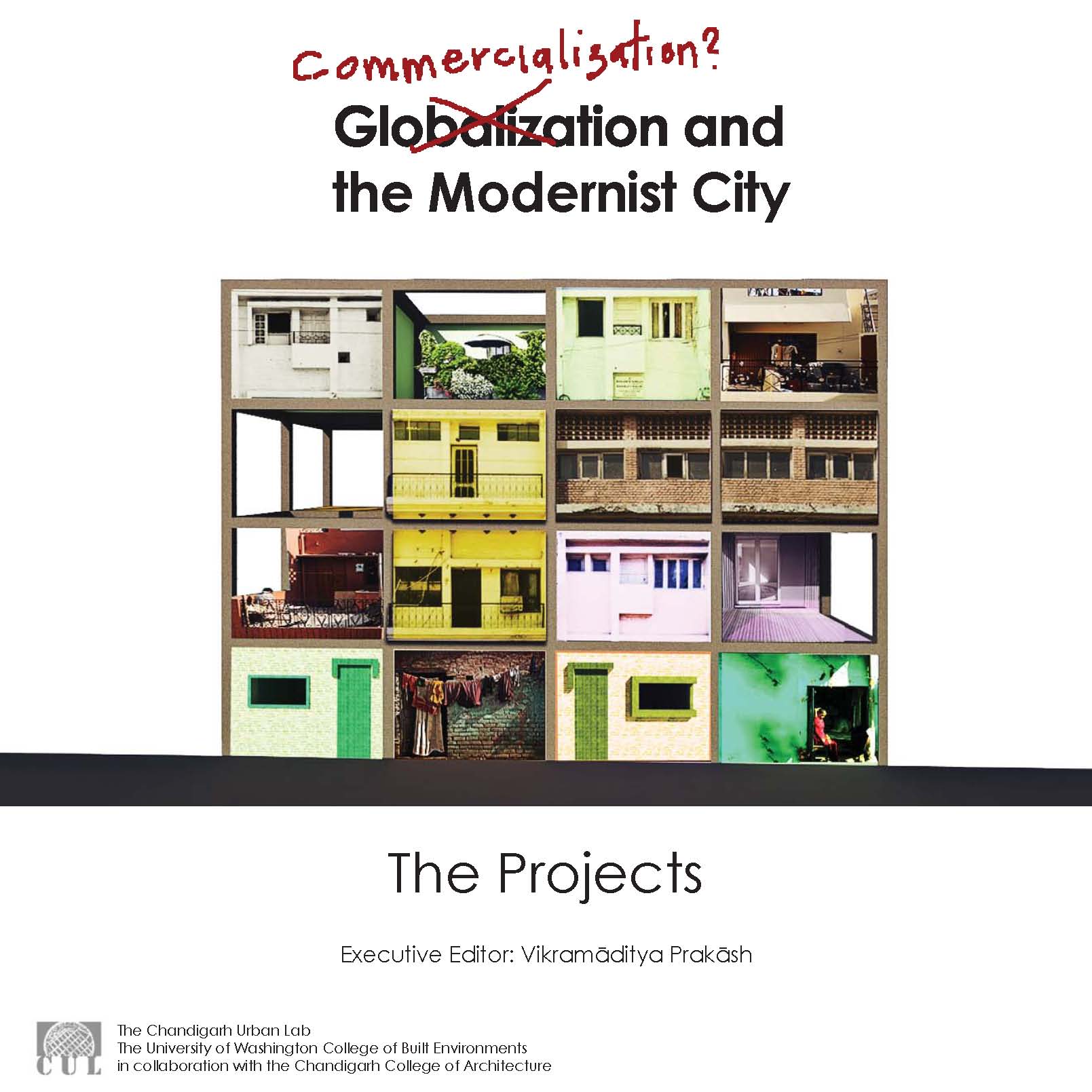Cataloguing: An Overview

The “designed” furniture, as the smallest module of the master plan, and the kinetic street furniture, as the smallest element of the informal city, provide a microcosm with which to understand the issues facing Chandigarh at the macro level. The juxtaposition of the Modernist furniture and kinetic street furniture parallels the larger preservation issues facing Chandigarh as a world heritage city and Chandigarh as a living, growing city.
The diagram above shows the evolution of Pierre Jeanneret’s style, in terms of form and materials. The piece on the far left was designed for the American furniture company Knoll by Jeanneret in 1947, prior to his work in India. The pieces he designed in Chandigarh can be seen as an evolution of his earlier design style, but adapted in india through the use of local material, craft, and technique. Jeanneret’s personal furniture (far right) especially, which is characterized by experimental techniques, seem to be informed by the jugaad.
The diagram below shows a typical layout ofthe informal section of a typical market street, showing the variety of furniture that exists side-by-side. This diagram explains how the Kinetic Modern functions in context.
Proceed to: Cataloguing: Modern Furniture







Leave a comment